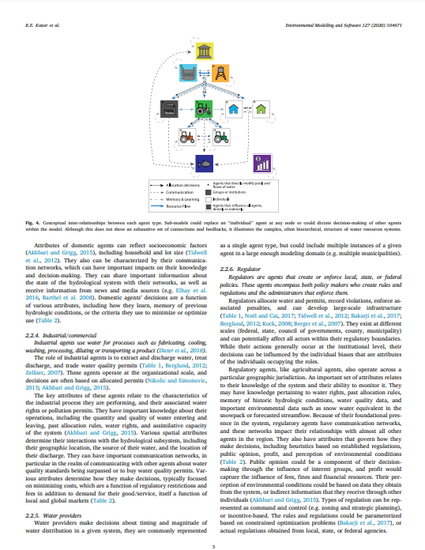
Modeling coupled social and biophysical dynamics of water resources systems is increasingly important due to population growth and changes in the water cycle driven by climate change. Models that explicitly represent these coupled dynamics are challenging to design and implement, particularly given the complicated and cross-scale nature of water governance. Agent-based models (ABMs) can capture human decision-making and nested social hierarchies, however, transferability is made difficult by location-specific details. A consistent description of water resources decision-makers (individuals, groups, agencies) would advance the rate of model development and increase synthesis across systems. Reviewing water resources ABMs, we propose eight agent types and associated operational roles that modify the storage, redistribution, and water use in a system. Application of the proposed typologies and use of best practices in model documentation, will support systematic design and development of transferable, scalable, water resources ABMs and facilitate the dynamic coupling of social and biophysical process modeling.
